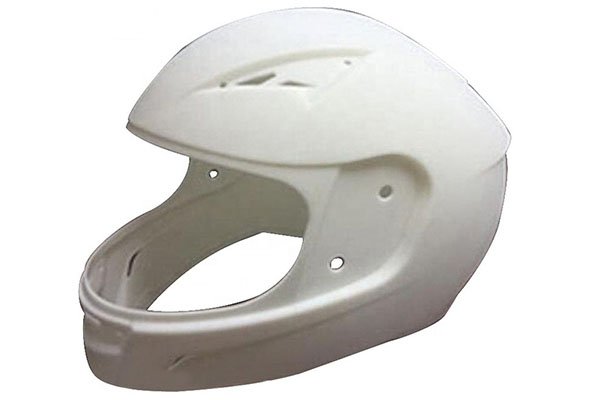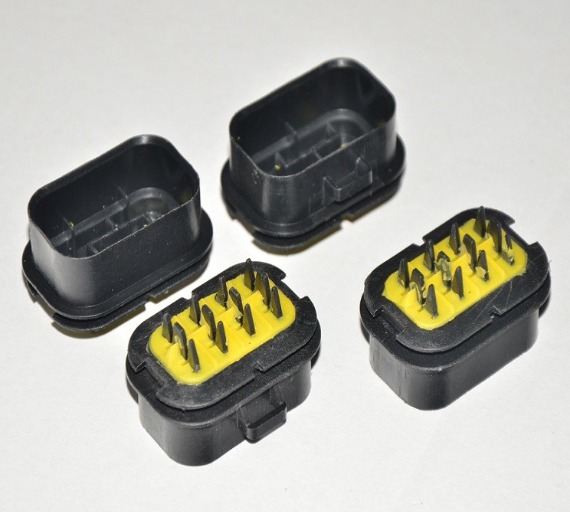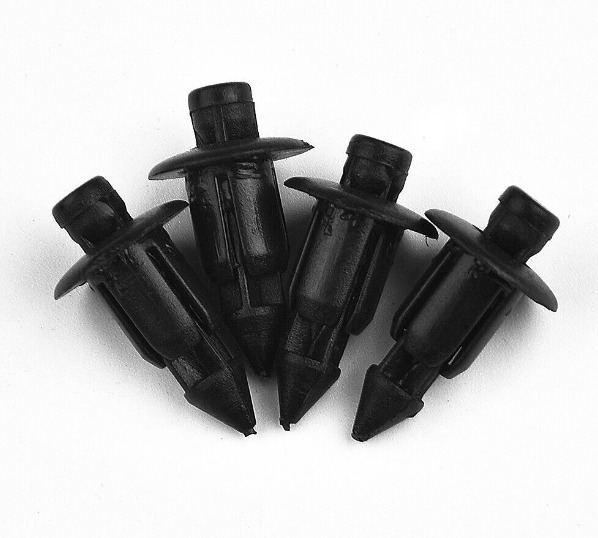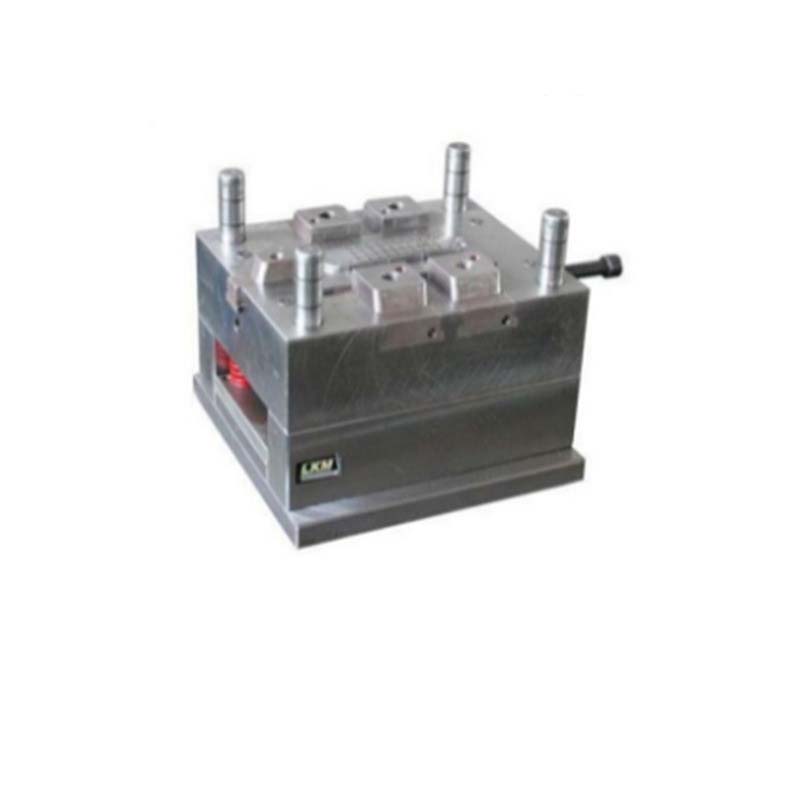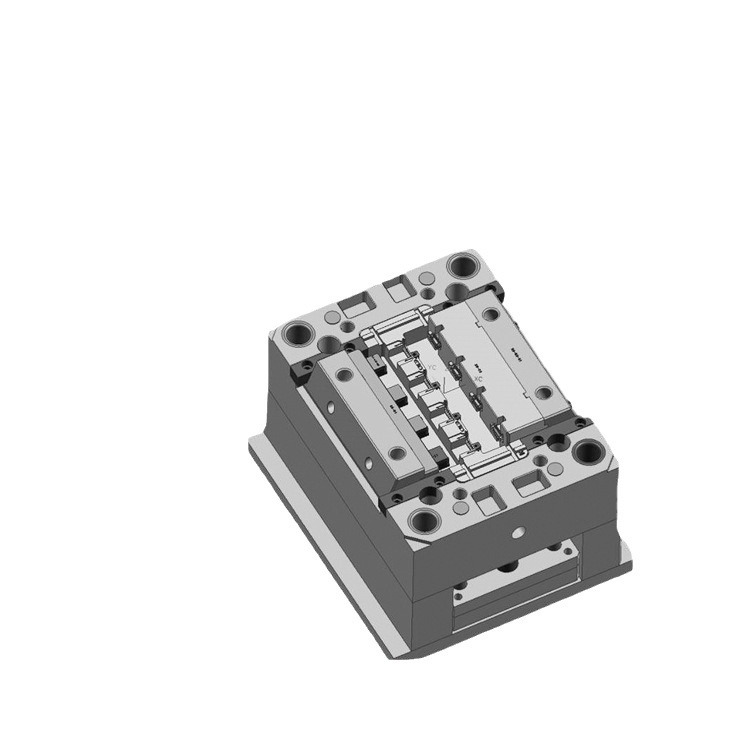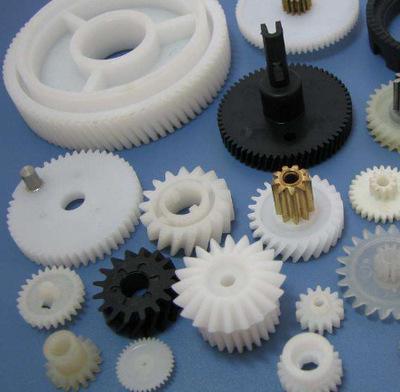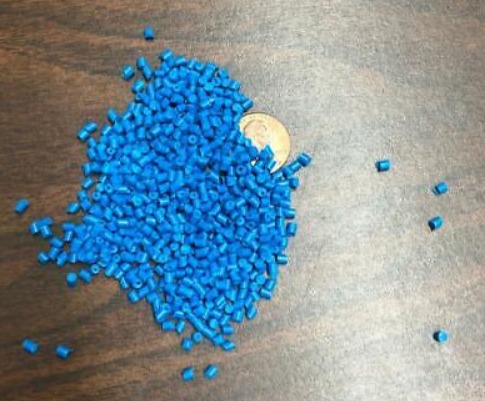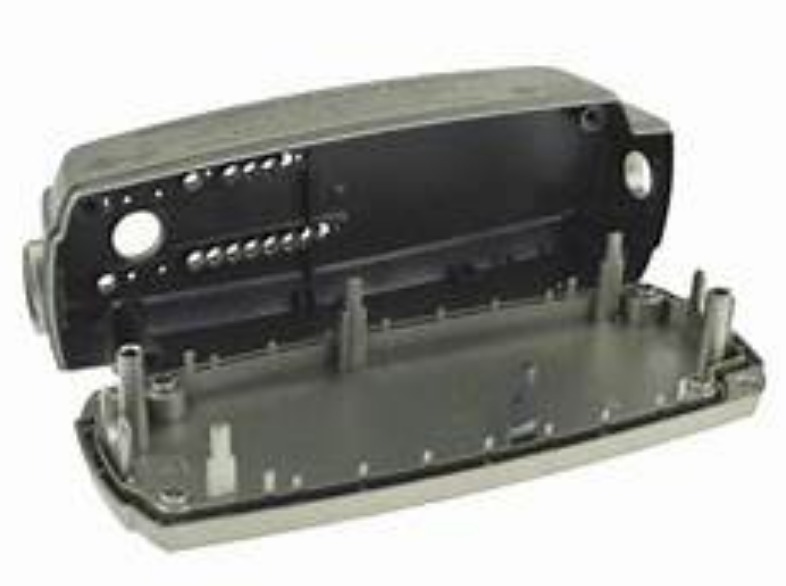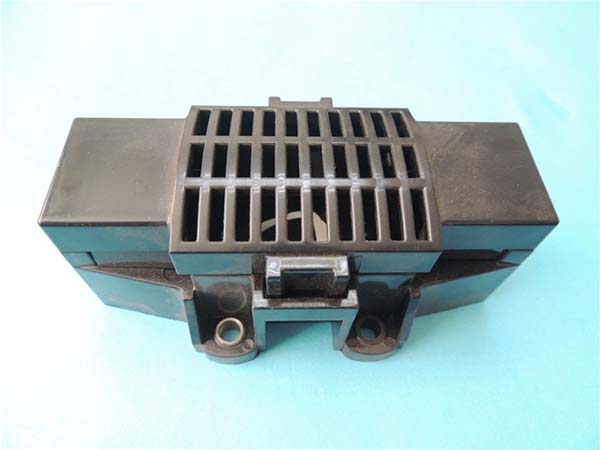Introduction
Unveiling the World of Large - Part Plastic Molding
Plastic molding, the process of shaping various forms of plastic materials (such as powders, granules, solutions, and dispersions) into desired products or blanks, has found its way into nearly every aspect of modern life. From the small components within our electronic devices to the large - scale parts in automotive and aerospace industries, plastic molding is an integral part of manufacturing.
The applications of plastic - molded products are extensive. In the automotive industry, plastic components are used for interior parts like dashboards, door panels, and seat covers, as well as exterior parts such as bumpers and body panels. In the aerospace field, lightweight plastic materials are employed to fabricate aircraft interiors, wing components, and engine parts, contributing to fuel efficiency and enhanced performance. In the construction industry, plastic pipes, fittings, and insulation materials are widely used due to their durability, corrosion - resistance, and cost - effectiveness.
However, when it comes to large - part plastic molding, it presents a unique set of challenges and considerations compared to smaller - scale plastic molding. The size, complexity, and functionality requirements of large parts demand a more in - depth understanding of the molding process, materials, and equipment. This article aims to be your comprehensive guide to mastering the art of plastic molding for large parts. Whether you are a novice in the field looking to gain basic knowledge or an experienced engineer seeking to optimize your large - part plastic molding operations, we will explore everything from the fundamental principles to the latest techniques, materials, and quality control measures. By the end, you'll be better equipped to solve problems, make informed decisions, and achieve high - quality results in large - part plastic molding projects.
I. The Basics of Plastic Molding for Large Parts
1.1 What is Plastic Molding?
Plastic molding is the process of shaping plastic materials into desired forms. It involves heating the plastic until it reaches a malleable state, then using various techniques to force it into a mold cavity. Once the plastic has cooled and solidified, it retains the shape of the mold.
The history of plastic molding dates back to the 19th century. In 1869, celluloid, the first man - made plastic, was invented. It was initially used for making billiard balls and later found applications in photographic films. The development of plastic molding technology truly took off in the 20th century. With the discovery of new plastic materials like Bakelite (the first synthetic thermosetting plastic) in 1907, and the subsequent development of polyethylene, polypropylene, and many other plastics, plastic molding techniques such as injection molding, extrusion molding, blow molding, and compression molding were refined and widely adopted. These techniques have continued to evolve, with the integration of advanced computer - aided design (CAD) and computer - aided manufacturing (CAM) systems, enabling more precise and efficient production.
1.2 Why Choose Plastic Molding for Large Parts?
There are several compelling reasons to choose plastic molding for large parts:
- Cost - effectiveness: Plastic materials are generally less expensive than metals or other alternative materials. For example, the cost of high - density polyethylene (HDPE), a commonly used plastic for large - part molding, is significantly lower than that of aluminum or steel. According to market data, HDPE can cost around \(1 - \)3 per kilogram, while aluminum costs approximately \(2 - \)4 per kilogram and steel around \(0.5 - \)2 per kilogram, depending on the grade. In addition, plastic molding processes often require less energy compared to metal - working processes such as casting or forging. A study by the American Plastics Council found that injection molding of plastic parts can consume up to 50% less energy than die - casting of metal parts of similar size.
- High Production Efficiency: Many plastic molding processes, especially injection molding, can produce parts at a very high rate. Injection molding machines can cycle through the molding process in as little as a few seconds for small parts and up to a minute or two for larger, more complex parts. For instance, a medium - sized injection molding machine can produce hundreds of large plastic parts in an hour, making it suitable for high - volume production requirements.
- Design Freedom: Plastic molding allows for the creation of parts with complex geometries that would be difficult or expensive to achieve with other manufacturing methods. With the help of CAD/CAM technology, designers can create intricate 3D models of large - part designs, which can then be translated into molds for plastic molding. For example, in the automotive industry, plastic dashboard components can be molded with integrated features such as air vents, cup holders, and instrument clusters, reducing the need for multiple assembled parts.
- Lightweight yet Strong: Plastics offer a good strength - to - weight ratio. Materials like acrylonitrile butadiene styrene (ABS) and polycarbonate (PC) are known for their high impact resistance and strength, while being much lighter than metals. In the aerospace industry, the use of lightweight plastic components helps to reduce the overall weight of aircraft, leading to improved fuel efficiency. For example, replacing metal parts with plastic in an aircraft interior can result in a weight reduction of up to 30 - 50%, according to industry estimates.
II. Key Factors in Mastering Plastic Molding for Large Parts
2.1 Material Selection
The choice of plastic material is crucial in large - part plastic molding. Different materials offer distinct properties that can significantly impact the performance and quality of the final product. Here are some commonly used plastics for large - part molding and their characteristics:
- Acrylonitrile Butadiene Styrene (ABS): ABS is a popular choice for large - part molding due to its excellent balance of properties. It has high impact resistance, which makes it suitable for parts that may be subject to physical stress or impact, such as automotive bumpers. ABS also offers good dimensional stability, meaning it maintains its shape well over time and under different environmental conditions. Its heat - resistance is moderate, with a heat - deflection temperature typically around 90 - 110°C, depending on the grade. In terms of chemical resistance, it is resistant to many common chemicals, although it can be affected by strong solvents.
- Polypropylene (PP): PP is known for its low density, which makes it a lightweight option for large - part applications. It has good chemical resistance, being resistant to a wide range of acids, alkalis, and organic solvents. PP also has a relatively high melting point, around 160 - 170°C, which allows it to be used in applications where some heat resistance is required. It has fair mechanical strength and is often used in applications such as large - scale storage containers, as it can withstand the weight and pressure of the stored contents.
- Polyethylene (PE): There are different types of PE, such as high - density polyethylene (HDPE) and low - density polyethylene (LDPE). HDPE offers high strength and stiffness, making it suitable for applications like large - diameter pipes used in water supply systems. It has excellent chemical resistance, especially to non - oxidizing acids and alkalis. LDPE, on the other hand, is more flexible and has better impact resistance at low temperatures. It is often used in applications such as plastic films and some large - scale packaging products.
The following table summarizes the key properties of these materials:
| Plastic Material | Impact Resistance | Heat - Resistance | Chemical Resistance | Density |
| ABS | High | Moderate (90 - 110°C) | Resistant to many common chemicals | 1.04 - 1.06 g/cm³ |
| PP | Fair | High (160 - 170°C melting point) | Resistant to acids, alkalis, and many organic solvents | 0.9 - 0.91 g/cm³ |
| HDPE | High | Good (can withstand high - temperature applications within its limit) | Excellent to non - oxidizing acids and alkalis | 0.94 - 0.96 g/cm³ |
| LDPE | Good, especially at low temperatures | Lower than HDPE | Good | 0.91 - 0.94 g/cm³ |
When selecting a material for large - part plastic molding, factors such as the intended application, environmental conditions, mechanical requirements, and cost should be carefully considered. For example, if the large part will be used in an outdoor environment with exposure to sunlight and various weather conditions, a material with good UV - resistance and weatherability should be chosen. If the part needs to withstand high temperatures during its use, a material with a higher heat - resistance property like PP or a heat - resistant grade of ABS would be more appropriate.
2.2 Mold Design
Mold design is a critical aspect of large - part plastic molding. A well - designed mold can ensure the successful production of high - quality parts with accurate dimensions and good surface finish.
- Mold Structure: The structure of the mold for large parts needs to be robust to withstand the high pressures and forces during the molding process. For large - scale injection molding, molds often have a two - plate or three - plate design. In a two - plate mold, the cavity and core are separated into two main plates, which is a relatively simple and cost - effective design for less complex parts. A three - plate mold, on the other hand, has an additional plate that allows for more complex gating systems, such as point - gates, which can be beneficial for parts with complex geometries or where a specific flow pattern of the plastic melt is required.
- Dimensional accuracy: Dimensional accuracy is crucial for large components, especially in applications that require close fit or strict functional requirements. The manufacturing accuracy of molds directly affects the dimensional accuracy of plastic parts. Advanced processing technologies, such as electrical discharge machining (EDM) and high-speed milling, are often used to manufacture high-precision molds. In addition, the selection of mold materials also affects dimensional accuracy, as different materials have different coefficients of thermal expansion. For instance, using die steel with a low coefficient of thermal expansion can reduce the dimensional changes of the mold caused by temperature variations, thereby enhancing the dimensional accuracy of plastic parts.
- Demolding method: Demolding is a key step in the plastic molding of large components. For large components, due to their large size, the demolding difficulty is usually also greater. Common demolding methods include ejector pin demolding, push plate demolding and slider demolding. Ejection by ejector pins is suitable for most regular-shaped components, where the plastic part is pushed out of the mold cavity by ejector pins. The push plate demolding is suitable for thin-walled or large-area components. The push plate evenly pushes the plastic part, preventing it from deforming during the demolding process. When the component has lateral grooves or protrusions, the slider demolding becomes particularly important. The slider can move laterally when the mold is opened, allowing the plastic part to be demolded smoothly.
When adjusting these processing parameters, it is important to consider the interactions between them. For example, changing the temperature may require corresponding adjustments to the pressure and injection speed to maintain optimal molding conditions. Additionally, trial - and - error testing and the use of computer - aided engineering (CAE) software can help in determining the best combination of processing parameters for a specific large - part plastic molding project.
IV. Yigu Technology's Insights
As a non - standard plastic metal products custom Supplier, Yigu Technology has rich experience in the plastic molding field. With advanced production equipment and a professional technical team, we have successfully completed numerous plastic molding projects for large parts.
Our strength lies in our ability to provide highly customized services. We understand that each large - part plastic molding project has unique requirements, whether it's the choice of materials, mold design, or processing parameters. We work closely with our clients from the initial design concept to the final product delivery, ensuring that every detail meets their specific needs.
Quality control is at the core of our operations. We have a comprehensive quality management system in place, from the inspection of raw materials to the final product testing. Our strict quality control measures ensure that all large - part plastic - molded products meet high - quality standards, reducing the risk of defects and ensuring long - term product performance.
In the ever - evolving field of large - part plastic molding, we also keep up with the latest technological advancements. By integrating new technologies such as AI - assisted mold design and real - time process monitoring, we strive to improve the efficiency and quality of our plastic molding processes, providing better solutions for our clients in various industries.
V. FAQ
5.1 What are the most suitable plastics for large - part molding?
For large - part molding, materials like Acrylonitrile Butadiene Styrene (ABS), Polypropylene (PP), and Polyethylene (PE) are popular choices. ABS offers high impact resistance, good dimensional stability, and a moderate heat - resistance (heat - deflection temperature around 90 - 110°C). PP is known for its low density, high chemical resistance, and relatively high melting point (160 - 170°C). PE, especially high - density polyethylene (HDPE), provides high strength and excellent chemical resistance, making it suitable for applications such as large - diameter pipes.
5.2 How can I prevent warping in large - part plastic molding?
To prevent warping, start with a proper mold design. Ensure uniform wall thickness in the part to avoid uneven cooling and shrinkage. An appropriate cooling system is crucial. Design the cooling channels in the mold to ensure even heat dissipation, reducing temperature gradients within the part. Control the processing parameters carefully. Adjust the melt temperature, injection pressure, and cooling time. For example, a higher mold temperature can help reduce internal stresses that cause warping. Also, consider the material's properties; some plastics are more prone to warping than others, and choosing the right material for the application can mitigate this issue.
5.3 What is the typical cost range for large - part plastic molding?
The cost of large - part plastic molding can vary widely. It depends on factors such as the type of plastic material (e.g., more specialized or high - performance plastics are more expensive), the complexity of the mold design (intricate molds with multiple components or complex geometries cost more to manufacture), production volume (higher volumes often lead to lower per - unit costs due to economies of scale), and processing parameters (energy - intensive processes can increase costs). Generally, for simple large - part plastic molding with common materials like HDPE or PP in medium - to - high production volumes, the cost per part can range from a few dollars to tens of dollars. However, for complex parts using high - end materials and in low - volume production, the cost per part can be significantly higher, potentially in the hundreds of dollars.
